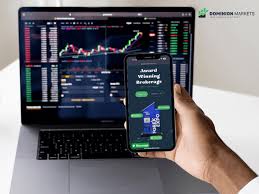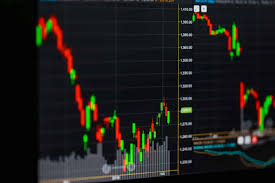
Forex trading can be an exciting financial activity, offering numerous opportunities for profit. Whether you’re a seasoned trader or just starting, understanding the market mechanics and having a solid strategy is critical. In this article, we will delve into a practical example of forex trading, along with tips and insights for enhancing your trading skills. If you’re looking for a reliable platform to start your trading journey, consider checking out forex trading example Trading Broker UZ.
What is Forex Trading?
The foreign exchange market, commonly known as Forex or FX, is the largest financial market in the world. It operates 24 hours a day, five days a week, and facilitates the trading of currencies. With a daily trading volume exceeding $6 trillion, forex trading offers liquidity and flexibility unlike any other market. Traders profit from the fluctuations in currency pair values, and the potential for profit attracts individuals and institutions alike.
How Does Forex Trading Work?
Forex trading involves buying one currency while selling another, resulting in a currency pair. Each currency pair consists of a base currency (the first currency) and the quote currency (the second currency). The exchange rate indicates how much of the quote currency is needed to purchase one unit of the base currency.
For example, in the currency pair EUR/USD, the euro (EUR) is the base currency, and the U.S. dollar (USD) is the quote currency. If the exchange rate is 1.10, it means that 1 euro can be exchanged for 1.10 U.S. dollars. Traders analyze market conditions, economic indicators, geopolitical events, and other factors to predict currency price movements.
A Practical Example of Forex Trading
Let’s consider a hypothetical scenario to illustrate how forex trading works in practice:
Scenario: Trading EUR/USD
Imagine you anticipate that the euro will strengthen against the U.S. dollar due to positive economic indicators from the Eurozone. You decide to trade the EUR/USD pair. The current exchange rate is 1.10, meaning you can buy EUR for USD.
You choose to buy 10,000 euros, which at the current rate costs you 11,000 U.S. dollars (10,000 * 1.10). After a few hours, new economic data is released, indicating stronger than expected growth in the Eurozone, and the exchange rate rises to 1.15.

Your 10,000 euros are now worth 11,500 U.S. dollars (10,000 * 1.15). If you decide to sell your euros at this new rate, you make a profit of 500 U.S. dollars (11,500 – 11,000). This illustrates the potential for profits in forex trading, although it’s important to remember that this market is also associated with significant risk.
Key Concepts in Forex Trading
Understanding various concepts is vital for successfully navigating the forex market. Here are a few key terms:
- Pips: A pip is the smallest price move in the exchange rate of a currency pair. It generally represents a change in the fourth decimal place for most pairs.
- Leverage: In forex trading, leverage allows traders to control a larger position than their actual capital. While this can amplify profits, it can also magnify losses.
- Margin: Margin is the amount of money required to open a leveraged position. It represents a fraction of the total trade size.
- Spread: The spread is the difference between the bid price (the price at which a trader can sell) and the ask price (the price at which a trader can buy). Spreads can vary based on market conditions.
Developing a Trading Plan
A trading plan is crucial for forex trading success. It should include your trading goals, risk tolerance, trading schedule, and strategies. Consider including the following elements:
- Market Analysis: Determine whether you will adopt a fundamental or technical analysis approach. Fundamental analysis involves studying economic indicators, while technical analysis focuses on price charts and patterns.
- Entry and Exit Points: Identify specific criteria for entering and exiting trades. This could involve setting profit targets and stop-loss orders.
- Risk Management: Decide on the percentage of your capital you are willing to risk on each trade. Many traders recommend risking no more than 1-2% of their trading capital on a single trade.
Utilizing Trading Tools
In the digital age, numerous tools and platforms can assist traders in making informed decisions. Trading platforms often offer a variety of features such as:
- Charting Tools: These tools allow traders to display price movements over various timeframes and identify potential trends.
- Economic Calendars: These provide information on upcoming economic events that may affect currency values, helping traders plan their trades accordingly.
- News Feeds: Real-time market news can significantly influence currency prices. Staying informed is essential for successful trading.
Final Thoughts
Forex trading can be lucrative yet challenging, requiring a thorough understanding of market dynamics. The example provided demonstrates the basic mechanics of trading while highlighting the potential for both profit and risk. As you embark on your trading journey, remember to adhere to your trading plan, manage risk effectively, and continuously educate yourself. With practice and perseverance, you can enhance your skills and potentially achieve success in the forex market.
To make the most of your forex trading experience, consider partnering with a reputable broker that supports your trading goals. Explore various platforms, assess their features, and find the one that suits your style best.
